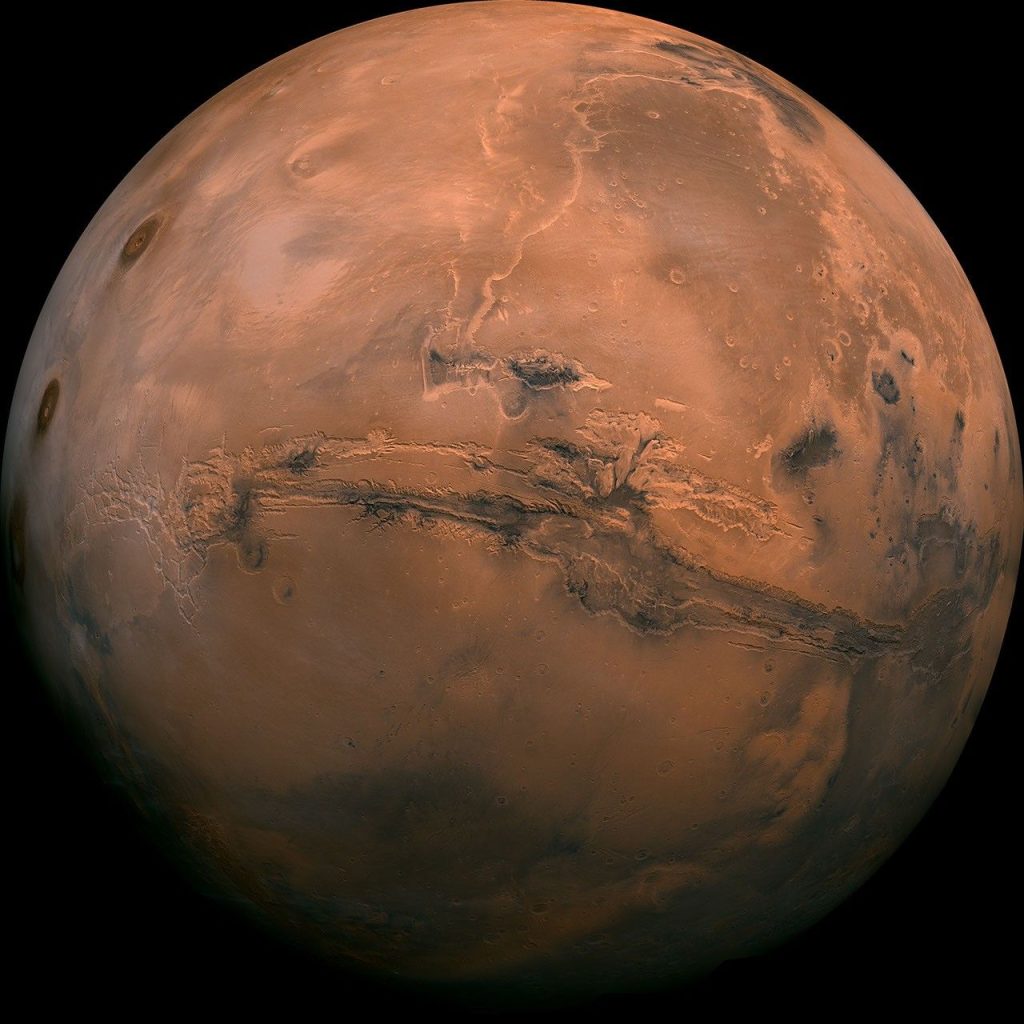A new international study partially funded by NASA on how Mars got its iconic red color adds to evidence that Mars had a cool but wet and potentially habitable climate in its ancient past.
The current atmosphere of Mars is too cold and thin to support liquid water, an essential ingredient for life, on its surface for lengthy periods. However, various NASA and international missions have found evidence that water was abundant on the Martian surface billions of years ago during a more clement era, such as features that resemble dried-up rivers and lakes, and minerals that only form in the presence of liquid water.
Adding to this evidence, results from a study published February 25 in the journal Nature Communications suggest that the water-rich iron mineral ferrihydrite may be the main culprit behind Mars’ reddish dust. Martian dust is known to be a hodgepodge of different minerals, including iron oxides, and this new study suggests one of those iron oxides, ferrihydrite, is the reason for the planet’s color.
The finding offers a tantalizing clue to Mars’ wetter and potentially more habitable past because ferrihydrite forms in the presence of cool water, and at lower temperatures than other previously considered minerals, like hematite. This suggests that Mars may have had an environment capable of sustaining liquid water before it transitioned from a wet to a dry environment billions of years ago.
“The fundamental question of why Mars is red has been considered for hundreds if not for thousands of years,” said lead author Adam Valantinas, a postdoctoral fellow at Brown University, Providence, Rhode Island, who started the work as a Ph.D. student at the University of Bern, Switzerland. “From our analysis, we believe ferrihydrite is everywhere in the dust and also probably in the rock formations, as well. We’re not the first to consider ferrihydrite as the reason for why Mars is red, but we can now better test this using observational data and novel laboratory methods to essentially make a Martian dust in the lab.”
“These new findings point to a potentially habitable past for Mars and highlight the value of coordinated research between NASA and its international partners when exploring fundamental questions about our solar system and the future of space exploration,” said Geronimo Villanueva, the Associate Director for Strategic Science of the Solar System Exploration Division at NASA’s Goddard Space Flight Center in Greenbelt, Maryland, and co-author of this study.
The researchers analyzed data from multiple Mars missions, combining orbital observations from instruments on NASA’s Mars Reconnaissance Orbiter, ESA’s (the European Space Agency) Mars Express and Trace Gas Orbiter with ground-level measurements from NASA rovers like Curiosity, Pathfinder, and Opportunity. Instruments on the orbiters and rovers provided detailed spectral data of the planet’s dusty surface. These findings were then compared to laboratory experiments, where the team tested how light interacts with ferrihydrite particles and other minerals under simulated Martian conditions.
“What we want to understand is the ancient Martian climate, the chemical processes on Mars — not only ancient — but also present,” said Valantinas. “Then there’s the habitability question: Was there ever life? To understand that, you need to understand the conditions that were present during the time of this mineral’s formation. What we know from this study is the evidence points to ferrihydrite forming and for that to happen there must have been conditions where oxygen from air or other sources and water can react with iron. Those conditions were very different from today’s dry, cold environment. As Martian winds spread this dust everywhere, it created the planet’s iconic red appearance.”
Whether the team’s proposed formation model is correct could be definitively tested after samples from Mars are delivered to Earth for analysis.
“The study really is a door-opening opportunity,” said Jack Mustard of Brown University, a senior author on the study. “It gives us a better chance to apply principles of mineral formation and conditions to tap back in time. What’s even more important though is the return of the samples from Mars that are being collected right now by the Perseverance rover. When we get those back, we can actually check and see if this is right.”
Part of the spectral measurements were performed at NASA’s Reflectance Experiment Laboratory (RELAB) at Brown University. RELAB is supported by NASA’s Planetary Science Enabling Facilities program, part of the Planetary Science Division of NASA’s Science Mission Directorate at NASA Headquarters in Washington.
NASA Goddard Space Flight Center, Greenbelt, Maryland








